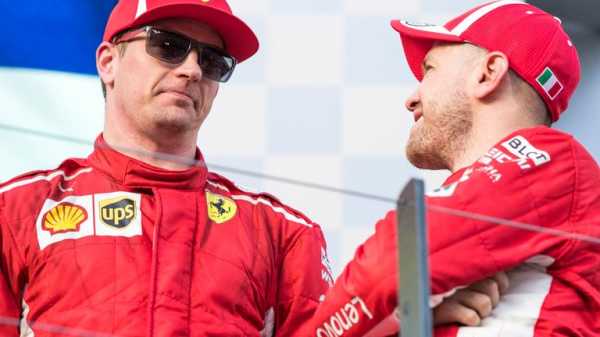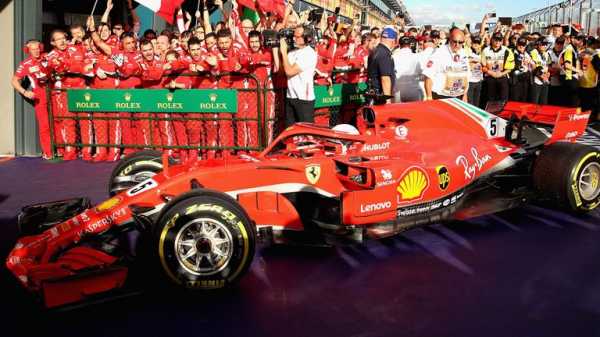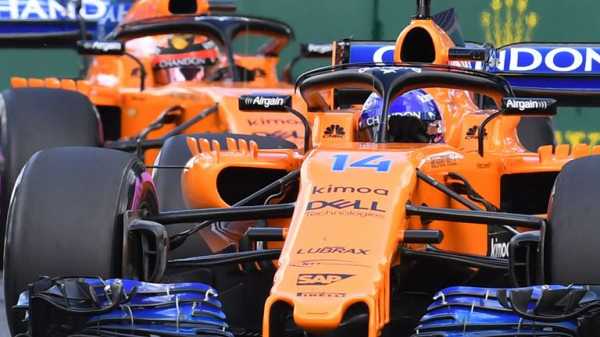
Lewis Hamilton made no attempt to disguise his confusion after losing the Australian GP to Ferrari rival Sebastian Vettel.
“I’m still in a little bit of disbelief as I don’t really understand what happened,” said a perplexed Hamilton as he reflected on the season opener.
Defeated in a race he had under control, and beaten chiefly by a faulty computer algorithm, Hamilton’s confusion was understandable. But the Mercedes driver’s disbelief was also in keeping with a weekend which asked as many questions as it answered and offered little in the way of definitive conclusions about what might await in F1 2018.
With Mercedes beaten in a race they had in their grasp, Vettel victorious but not yet fond of his new car, and Red Bull quick but handicapped, F1’s opening 2018 salvo was at turns intriguing, promising and ambiguous.
Mercedes still the team to beat
Ultimately, the Australian GP was lost by Mercedes because of a faulty computer calculation assuring the team Hamilton only needed to close within 15 seconds of Vettel, who had not yet pitted, to be sure of retaining the lead even in the event of a Virtual Safety Car. In fact, Hamilton needed to be within 10 seconds. Ferrari, on the other hand, had studied the data and done their sums correctly.
“We did our homework and spoke about exactly that before the race. As soon as l saw the Virtual Safety Car l knew what to do – and it worked,” said Vettel.
How did Mercedes lose in Australia?
But smart thinking won’t always beat outright speed in F1 2018 and Australia delivered a firm impression that Mercedes have a significant pace advantage at the start of 2018.
“I think we are three or four tenths behind in all conditions,” accepted Vettel. Hamilton was more circumspect, predicting “it’s going to be close” and warning Ferrari’s straight-line speed would make the Scuderia particularly formidable in Bahrain.
But in Australia, Hamilton and Mercedes were clearly fastest. Less clear was by how much.

Vettel victorious but vexed by his new car?
Blitzed on Saturday, Ferrari’s race pace on Sunday looked comparable to Mercedes’ until the first round of pit-stops when Raikkonen kept within three seconds of Hamilton and the world champion’s half-second advantage in qualifying surely owed more to personal brilliance and near perfection than an exact representation of the W09’s pace compared to the SF71H.
“I don’t think the gap was as big as it seemed on Saturday, it’s just that I had a good lap and maybe Sebastian didn’t have a good lap,” said Hamilton. “But today they were very, very quick. I put up a bit of a fight towards the end but they were within a tenth of us today.”
But who was the ‘they’? Vettel may have won but it was Raikkonen who was the fastest Ferrari driver all weekend – indeed, Vettel was only in a position to win the race due to the Virtual Safety Car’s intervention precisely because he was put on the contrary strategy after falling further behind Raikkonen and Hamilton on race day.
This too will sound like confused thinking, but a firm impression from Vettel’s post-race comments is that he is neither happy nor comfortable with his new car.
“I just didn’t like the feel of it,” Vettel said. “The car just doesn’t respond the way you like and it’s sliding in places you don’t want it to slide.
“I need a little bit more of confidence with the car, which is not where we want it to be yet. There is a lot of work to do. I still need to drive around the issues more than I want to. I know exactly what I want, and we need to work on it.”

Where do Red Bull fit into the frontrunning picture?
While Hamilton and Mercedes had a compelling ‘if only’ tale to tell after the race, spare a thought too for Daniel Ricciardo.
How different the Australian GP might have been for Red Bull and the local favourite but for a timing loom becoming loose during Friday practice. Spared the grid demotion that otherwise-innocuous occurrence ultimately triggered, Ricciardo may have been a major player on Sunday.
Could he have even challenged for victory?
Qualifying was ambiguous and messy because of Red Bull’s decision to run the supersofts in Q2, but Ricciardo’s pace during Friday’s race simulations was on a par with Hamilton’s and he ended the real thing on Sunday as the fastest driver on track. Albeit on far fresher tyres, the Red Bull had no difficulty hauling in Kimi Raikkonen as Ricciardo finished within a second of second place.
“I think we’re really close to Ferrari’s pace,” said Ricciardo. “We were definitely one of, if not the quickest car on track today.”
From Max Verstappen, within a tenth of both Ferraris in qualifying despite a mistake on his final flying lap, there was much the same sentiment. “As soon as we were in clean air the pace was good,” he said. “We don’t need to worry, we just need to focus on getting a clean qualifying and then in the race everything should sort itself out.”
Verstappen, too, had reason to wonder what might have been if only he had remained ahead of Kevin Magnussen off the line and then not spun when pushing too hard to rectify his mistake.
Red Bull’s principal issue remains a relative lack of grunt from their Renault engine amid suggestions it is 40 horsepower down compared to Mercedes’ and Ferrari’s – and that’s before the Silver Arrows’ ‘party mode’ is factored in.
But it’s one of the few absolute certainties emerging from the season opener that, compared to last year, when they started nearly a second a lap off the pace of Mercedes and Ferrari, Red Bull are in a good place.

Who is the best of the rest?
While the identity of F1’s top three teams is clear cut, three other teams will have departed Australia in good heart about their hopes of being ‘the best of the rest’:
Renault, after their both of their drivers finished in the top 10 on both Saturday and Sunday; Haas, who clearly had the fourth-fastest car on show until their freakish double pit-stop failure retired both Romain Grosjean and Kevin Magnussen; and McLaren because Fernando Alonso is Fernando Alonso and the team are still only in the very early stages of unlocking the full potential of their package.
Australian GP results in full
The MCL33 was run conservatively in Australia as an understandable precautionary measure following their reliability issues in winter testing. It will be pushed harder in the upcoming Bahrain and China double-header and it will need to be: the failure of either Alonso or Vandoorne to reach Q3, albeit by less than a tenth of a second, was at the lower end of expectations.
Much like the Ferrari, the MCL33 fared comparatively better in race trim than in qualy mode, but Alonso’s post-race remarks about targeting Red Bull was surely pushing optimism to its absolute limits. In Q2, Alonso was eight tenths shy of Ricciardo. A day later, the Alonso crossed the line 20 seconds behind Ricciardo in a race which was effectively restarted at the halfway stage. Whoever ‘the best of the rest’ actually is, they have a chasm to close to the ‘big three’.
As for the overall picture of F1 2018, China and Bahrain have much to answer for.
Sky Sports F1 is the only place to watch every Formula 1 Grand Prix, qualifying and practice session live in 2018. Find out more about Sky Sports F1.
Comment below to get involved in the debate, but please adhere to our House Rules. If you wish to report any comment, simply click on the down arrow next to the offending comment and click ‘Report’.
Also See:
Sourse: skysports.com






